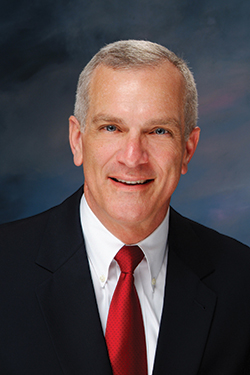
In early March, nearly 1,600 elected and appointed county officials came together for the annual National Association of County Officials (NACO) legislative conference. This gathering, held in Washington DC, is an opportunity for officeholders to work for the common good of county governments and their citizens.
“Why Counties Matter” was the theme for this year’s conference—and they really do. As you can imagine, the more than 3,000 counties across the United States are very diverse, and our issues can also be very different. What do Loving County, Texas (population 62), Tazewell County, Illinois (population 135,394) and Los Angeles County, California (population 9,787,747) have in common with each other? More than you may think.
Let me first address some of the differences between counties. The easiest to identify is urban versus rural makeup, with most counties claiming to be a mix of both. Tazewell County falls into this category, with more than two-thirds of the population living in the top third of the county and the remainder composed primarily of farmland. Other variations include ownership of hospitals and nursing homes, transit systems and airports (two counties in Illinois own their own airstrips) and a myriad of other services. Some deal with significant crime issues, while others deal in water rights for farmers.
But counties have so much more in common, and they are an essential building block for strong and healthy communities. “If you vote, drive to work, take the bus, get a flu shot, visit the library, go to the hospital, eat at a restaurant, play in the park, recycle or call 911, you are interacting with your county government,” said Chris Rodgers, NACO president and county commissioner from Nebraska. This statement goes back to the theme of “Why Counties Matter.”
In Tazewell County, we run the court system as an agent of the State of Illinois. We recruit the jurors and coordinate the schedule, all the while maintaining the courthouse. We collect the fines and provide public defenders for those unable to afford an attorney. The state’s attorney is the prosecutor for the county and also defends us against any actions. Anything related to the local courts are handled through the county.
The sheriff is the chief law enforcement official in the county, overseeing all aspects of security and protection for its citizens. Our sheriff also oversees and runs the jail 24 hours a day, 365 days a year.
The clerk runs all elections and coordinates the paperwork and precincts. He or she is also responsible for birth certificates, death certificates and helping the board in liquor licenses for the unincorporated areas of the county.
The treasurer collects the property taxes and distributes the money to each taxing body. The auditor keeps a close eye on all spending to make sure money is being spent wisely and according to the law. The coroner investigates and certifies deaths throughout the county.
Counties serve so many other functions that space prohibits from mentioning them all here. The Health Department, Emergency Management Agency, Zoning, Animal Control and Highway Department (maintaining over 200 miles of roads and bridges) are just a few.
Counties really do matter, as our recent conference suggested. Of that, there can be no doubt. iBi

